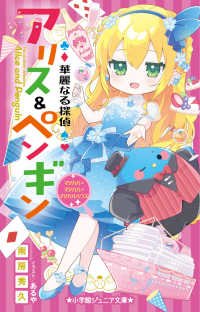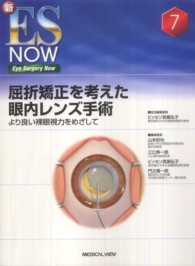- ホーム
- > 洋書
- > ドイツ書
- > Social Sciences, Jurisprudence & Economy
- > Politics, Society, Work
- > miscellaneous
Full Description
This book examines the development of Cultural and Creative Industries (CCI) in China through the angle of Chinese Theatre, xiqu. It focuses on the political and socio-economic transition period at the turn of the 21st century, as China evolves from 'Made in China' to 'Created in China', highlighting associated class reconstruction and cultural production and consumption. There are many forms of Chinese Theatre, the most popular one throughout Chinese history to date is the sing-song drama, collectively refers to as xiqu, which currently has over 300 regional styles across China. In 2014, President Xi Jinping's Beijing Talk on Arts and Literature, which serves as China's latest Chinese Communist Party (CCP) ideological direction and cultural policy, stressed that 'the future of Chinese cultural and creative industries is to be anchored on traditional art forms, such as xiqu'. Such Chinese cultural and creative industry distinction will be addressed in this book.
Contents
1. Introduction.- 2. Zhejiang all-female Yueju, from textile factory to creative cluster.- 3. Xi'an Qinqiang, 'creative destruction' for new urban branding.- 4. Suzhou Kunqu, conspicuous consumption for the new scholar middle class.- 5. Dongbei Errenzhuan, the rise and fall of a Chinese entertainment industry.- 6. Fujian Gaojiaxi, global illegal migrants' opera consumption.- 7. Shanghai Huju, Opera Village verses Disneyland, the power of the tradition.- 8. Conclusion.







